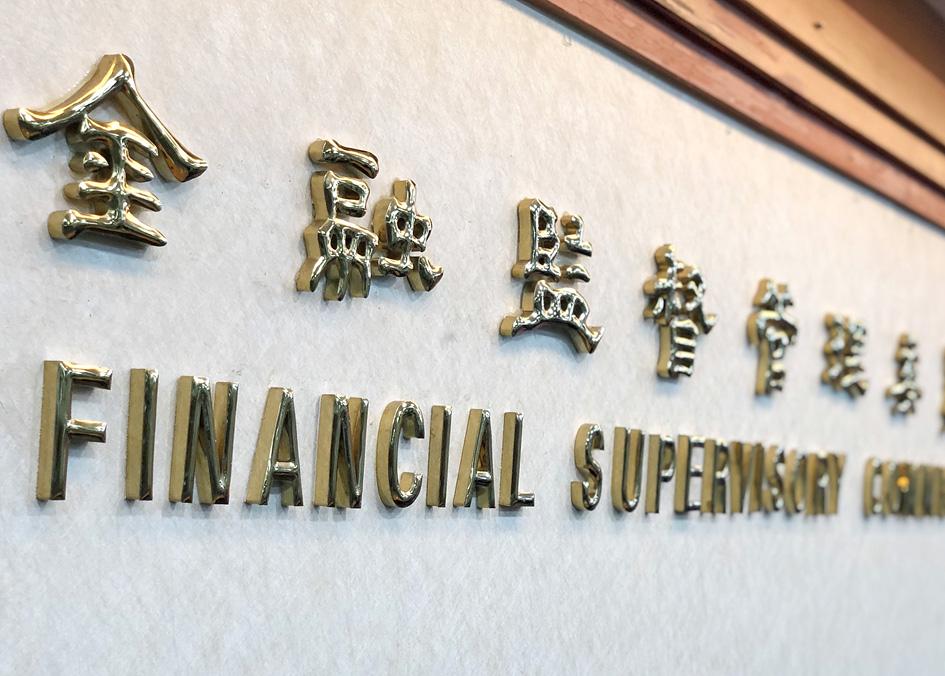Local banks’ combined profit grew in March, for the first time since May last year, thanks to an increase in investment gains and interest income, data released by the Financial Supervisory Commission on Thursday showed.
The banks’ combined pretax profits grew 76 percent year-on-year to NT$32 billion (US$1.15 billion) in March, ending 10 consecutive months of annual declines, the data showed.
Banks recorded an annual increase of NT$14.25 billion in combined investment gains as financial markets boomed, while their net interest income rose by NT$1.4 billion, the data showed.

Photo: Kelson Wang, Taipei Times
In the first quarter, banks’ pretax profits rose 10.9 percent year-on-year to NT$89.76 billion, it showed.
Domestic bank branches saw their combined pretax profits rise 25 percent year-on-year to NT$59.9 billion in the first quarter, accounting for 66.8 percent of all profits, while banks’ offshore banking units, overseas branches and operations in China reported annual declines of 3 percent, 23 percent and 55.5 percent in pretax profits respectively, the data showed.
Overseas branches’ declining profits could be attributed to several banks setting higher provisions for bad loans in Hong Kong, while fluctuating exchange rates between the Chinese yuan and US dollar caused a drop in profits at Chinese branches, the commission said.
Banks’ non-performing loans totaled NT$72.5 billion as of the end of March, up NT$1.8 billion from a month earlier, while their non-performing loan ratio remained flat at 0.23 percent, the data showed.

GROWING OWINGS: While Luxembourg and China swapped the top three spots, the US continued to be the largest exposure for Taiwan for the 41st consecutive quarter The US remained the largest debtor nation to Taiwan’s banking sector for the 41st consecutive quarter at the end of September, after local banks’ exposure to the US market rose more than 2 percent from three months earlier, the central bank said. Exposure to the US increased to US$198.896 billion, up US$4.026 billion, or 2.07 percent, from US$194.87 billion in the previous quarter, data released by the central bank showed on Friday. Of the increase, about US$1.4 billion came from banks’ investments in securitized products and interbank loans in the US, while another US$2.6 billion stemmed from trust assets, including mutual funds,

AI TALENT: No financial details were released about the deal, in which top Groq executives, including its CEO, would join Nvidia to help advance the technology Nvidia Corp has agreed to a licensing deal with artificial intelligence (AI) start-up Groq, furthering its investments in companies connected to the AI boom and gaining the right to add a new type of technology to its products. The world’s largest publicly traded company has paid for the right to use Groq’s technology and is to integrate its chip design into future products. Some of the start-up’s executives are leaving to join Nvidia to help with that effort, the companies said. Groq would continue as an independent company with a new chief executive, it said on Wednesday in a post on its Web

JOINT EFFORTS: MediaTek would partner with Denso to develop custom chips to support the car-part specialist company’s driver-assist systems in an expanding market MediaTek Inc (聯發科), the world’s largest mobile phone chip designer, yesterday said it is working closely with Japan’s Denso Corp to build a custom automotive system-on-chip (SoC) solution tailored for advanced driver-assistance systems and cockpit systems, adding another customer to its new application-specific IC (ASIC) business. This effort merges Denso’s automotive-grade safety expertise and deep vehicle integration with MediaTek’s technologies cultivated through the development of Media- Tek’s Dimensity AX, leveraging efficient, high-performance SoCs and artificial intelligence (AI) capabilities to offer a scalable, production-ready platform for next-generation driver assistance, the company said in a statement yesterday. “Through this collaboration, we are bringing two

Even as the US is embarked on a bitter rivalry with China over the deployment of artificial intelligence (AI), Chinese technology is quietly making inroads into the US market. Despite considerable geopolitical tensions, Chinese open-source AI models are winning over a growing number of programmers and companies in the US. These are different from the closed generative AI models that have become household names — ChatGPT-maker OpenAI or Google’s Gemini — whose inner workings are fiercely protected. In contrast, “open” models offered by many Chinese rivals, from Alibaba (阿里巴巴) to DeepSeek (深度求索), allow programmers to customize parts of the software to suit their